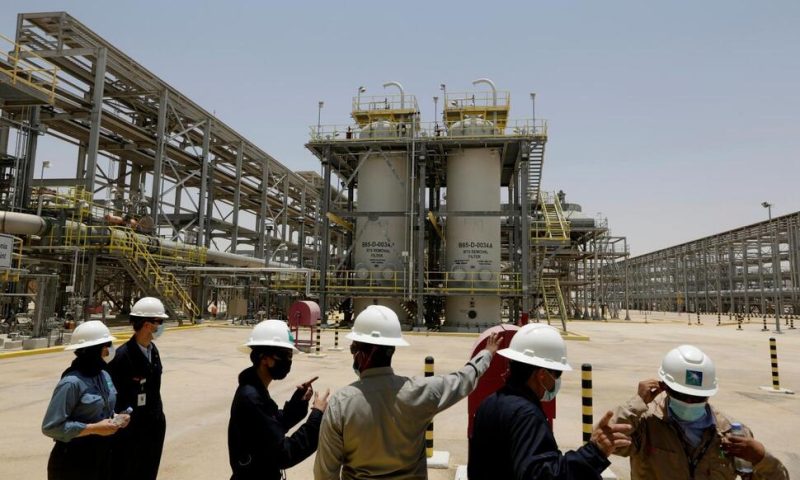Oil giant Saudi Aramco is reporting a $42.4 billion profit in the third quarter of this year, buoyed by higher global energy prices that have filled the kingdom’s coffers but helped fuel inflation worldwide.
DUBAI, United Arab Emirates — Oil giant Saudi Aramco on Tuesday reported a $42.4 billion profit in the third quarter of this year, buoyed by the higher global energy prices that have filled the kingdom’s coffers but helped fuel inflation worldwide.
The oil firm’s profits will help fund the kingdom’s assertive Crown Prince Mohammed bin Salman’s plans for a futuristic city on the Red Sea coast, but also comes as the U.S. grows increasingly frustrated by higher prices at the pump chewing into American consumer’s wallets.
Those tensions yet again have chilled relations between Riyadh and Washington before the Nov. 8 midterm elections.
In a note to investors, the predominantly state-owned oil company said its average barrel of crude sold for $101.70 in the third quarter — up from $72.80 at the same point last year. It’s Aramco’s second-largest quarterly profit in its history, just before its second-quarter results this year saw a profit of $48.4 billion.
It put its profits so far in 2022 at $130.3 billion, compared to $77.6 billion in 2021.
“While global crude oil prices during this period were affected by continued economic uncertainty, our long-term view is that oil demand will continue to grow for the rest of the decade given the world’s need for more affordable and reliable energy,” Aramco CEO Amin H. Nasser said in a statement.
Aramco will keep its dividend this quarter at $18.8 billion, the world’s highest.
Benchmark Brent crude traded just shy of $95 a barrel Tuesday. The sliver of Aramco that the kingdom has put on Riyadh’s Tadawul stock market stood at $9.29 a share before trading Tuesday — putting its valuation at just over $2 trillion. Only Apple’s valuation, at $2.44 trillion, is higher.
Saudi Arabia’s vast oil resources, located close to the surface of its desert expanse, make it one of the world’s cheapest places to produce crude. For every $10 rise in the price of a barrel of oil, Saudi Arabia stands to make an additional $40 billion a year, according to the Institute of International Finance.
That’s crucial as Prince Mohammed and his father, King Salman, rely on oil revenues to fund the kingdom’s government. The International Monetary Fund puts Saudi Arabia’s breakeven price for crude at just under $80 a barrel. The prince also likely wants to use the high oil prices to help fund his planned $500 billion futuristic city called Neom on the Red Sea.
OPEC and a loose confederation of other countries led by Russia agreed in early October to cut its production by 2 million barrels of oil a day, beginning in November.
OPEC, led by Saudi Arabia, has insisted its decision came from concerns about the global economy. Analysts in the U.S. and Europe warn a recession looms in the West from inflation and subsequent interest rate hikes, as well as food and oil supplies being affected by Russia’s war on Ukraine.
In Washington, anger has grown with Saudi Arabia, particularly from President Joe Biden, who traveled to the kingdom in July and shared a fist bump with Crown Prince Mohammed. Biden recently warned the kingdom that “there’s going to be some consequences for what they’ve done” as a gallon of regular gasoline costs on average $3.75. Gasoline prices often rank among the top concerns for American voters.
Saudi Arabia lashed back, publicly claiming the Biden administration sought a one-month delay in the OPEC cuts that could have helped reduce the risk of a spike in gas prices ahead of the U.S. midterm elections.
Biden on Monday separately accused oil companies of “war profiteering” as he raised the possibility of imposing a windfall tax on American energy companies if they don’t boost domestic production.

